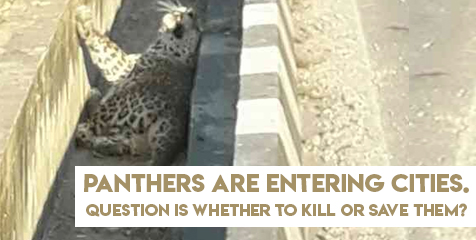Posted inMore
Panthers are entering cities. Question is whether to kill or save them?
The news of panthers being seen near Udaipur is not uncommon these days. The beast was seen sitting in a pipe at the site in Pratapnagar Bypass where the new…
